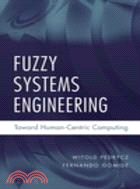| FindBook |
有 1 項符合
Fuzzy Systems Engineering: Toward Human-Centric Computing的圖書 |
 |
FUZZY SYSTEMS ENGINEERING: TOWARD HUMAN-CENTRIC COMPUTING 作者:WITOLD PEDRYCZ 出版社:全華經銷 出版日期:2007-08-13 規格:24*16cm / 精裝 / 526頁 |
| 圖書館借閱 |
| 國家圖書館 | 全國圖書書目資訊網 | 國立公共資訊圖書館 | 電子書服務平台 | MetaCat 跨館整合查詢 |
| 臺北市立圖書館 | 新北市立圖書館 | 基隆市公共圖書館 | 桃園市立圖書館 | 新竹縣公共圖書館 |
| 苗栗縣立圖書館 | 臺中市立圖書館 | 彰化縣公共圖書館 | 南投縣文化局 | 雲林縣公共圖書館 |
| 嘉義縣圖書館 | 臺南市立圖書館 | 高雄市立圖書館 | 屏東縣公共圖書館 | 宜蘭縣公共圖書館 |
| 花蓮縣文化局 | 臺東縣文化處 |
|
|
圖書介紹 - 資料來源:博客來 評分:
圖書名稱:Fuzzy Systems Engineering: Toward Human-Centric Computing
|











